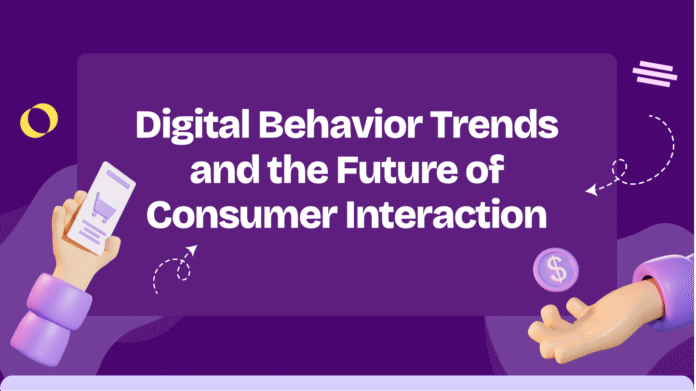As we enter a new phase of digital transformation, the way consumers interact with content, brands, and platforms is evolving faster than ever. The patterns shaping online behavior today are not simply generational preferences or temporary fads. They are signals of a broader shift in how people search, engage, trust, and transact in a fully connected world. For marketers and C-suite leaders, these behavioral signals are no longer optional insights. They are essential inputs for rethinking how business strategies are built and how brand relationships are sustained.
Data from sources such as Google Trends, Statista, and LocalIQ reveal a clear trajectory. Across most global markets, search behavior has become more intent-driven and voice-enabled. Consumers are typing fewer generic queries and instead using natural language to ask questions and seek specific solutions. Phrases like “best sustainable skincare near me” or “how to reduce tax legally as a freelancer” are now more common than single-word searches. This change in search language reflects deeper user intent and demands more precise content strategy.
Another significant trend is the growing importance of micro-moments. These are those brief, high-intent interactions where a user turns to their device to know something, do something, go somewhere, or buy something. According to Google, over 70 percent of consumers now say they make purchase decisions faster than ever before because of digital research. This acceleration means that brands have a smaller window to influence decision-making and must be ready with real-time, mobile-optimized, and personalized content.
Age-based digital behavior also highlights key differences in expectations and trust. Gen Z and Millennials prioritize speed, visual content, and brand values. They are more likely to use TikTok or Instagram as search engines and trust peer reviews or influencers over institutional authority. In contrast, Gen X and Boomers still rely heavily on Google, news websites, and email newsletters, placing higher trust in expert opinions, credentials, and formal endorsements. This fragmentation requires marketers to adopt a multi-format, multi-channel approach, tailoring not just the message but the delivery method to each segment’s preference.
Video content continues to dominate, not just in entertainment but in learning, comparison shopping, and product education. Statista reports that over 91 percent of businesses now use video as a marketing tool, and consumers increasingly expect it. Explainer videos, testimonials, how-to content, and live interactions are now baseline rather than add-ons. As internet speeds increase and platforms like YouTube, LinkedIn, and Instagram Reels integrate shopping and calls to action, video will continue to drive both engagement and conversion.
Trust remains the most valuable currency. Recent studies by LocalIQ show that consumers are growing skeptical of overly polished brand messages. They gravitate toward authenticity, transparency, and responsiveness. Reviews, community comments, and user-generated content often outweigh traditional brand claims in influencing perception. This has forced brands to shift from one-way communication to ongoing digital dialogue. Social listening, real-time community engagement, and adaptive messaging are now core components of brand strategy.
The mobile experience is another critical area. Over 60 percent of all digital interactions happen on mobile devices, yet many businesses still fail to optimize fully for responsiveness, speed, or in-app behavior. With Google’s mobile-first indexing and customer expectations shaped by instant-access apps like Uber and Amazon, businesses must deliver seamless, intuitive mobile journeys or risk being overlooked entirely.
The next five years will also see the rise of predictive interaction. AI-driven personalization will allow brands to anticipate customer needs based on behavior patterns, past interactions, and contextual data. From personalized web pages to adaptive pricing and dynamic content, companies will be expected to meet users not just where they are, but where they are likely to be next. This shift will require deeper investments in data analytics, behavioral segmentation, and ethical automation.
Privacy is an equally important trend. As consumers become more aware of how their data is used, trust will hinge on transparency and control. Cookieless tracking, first-party data strategies, and compliance with privacy regulations such as GDPR and its equivalents will be fundamental to digital credibility. Brands that use data respectfully and communicate its usage clearly will gain long-term loyalty.
For marketers, this landscape is both a challenge and a strategic opportunity. The key lies in building infrastructure that can adapt to constant change. That means investing in content systems, customer data platforms, agile teams, and cross-functional collaboration between marketing, product, and technology. It also means moving away from a campaign mindset toward an ecosystem mindset where content, engagement, and analytics work as one fluid system.
Consumer behavior is no longer just digital. It is digital by design. Every touchpoint, from discovery to decision, is shaped by an expectation of immediacy, relevance, and authenticity. The brands that thrive in this environment will not be those with the biggest budgets, but those with the clearest understanding of evolving behavior and the agility to meet it with precision.
The future of consumer interaction will not be dictated by technology alone. It will be shaped by how well businesses learn from behavior, adapt their models, and rebuild trust with a generation of digital-first, value-conscious, and interaction-savvy consumers. In that future, behavior is the strategy. And adaptation is the advantage.




